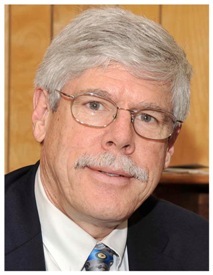MIPSE Seminar
The Naval Research Enterprise and Plasma Physics Research at the Naval Research Lab

The environments of importance to the Navy and Marine Corps reach from the bottom of the ocean to the distant reaches of space. A unique enterprise has been established which performs research across this spectrum from discovery and innovation to fleet-specific ap-plications. The US Naval Research Laboratory was established in 1916 to “[Conduct] explora-tory and research work…necessary…for the benefit of Government service.” The NRL Plasma Physics Division (PPD) was established in 1966 to perform fusion research, to create X-ray simulators for testing nuclear weapons effects, and to understand high altitude nuclear ex-plosions. Today, the PPD conducts a broad basic research program in plasma physics, labo-ratory discharge and space plasmas, intense electron and ion beams and photon sources, atomic physics, pulsed power sources, radiation hydrodynamics, high-power microwaves, laser physics, advanced spectral diagnostics, and nonlinear systems. PPD also conducts ap-plied research in inertial fusion energy, detection of weapons of mass destruction, and many aspects of theoretical and experimental space physics. Finally, the PPD also participates in two Innovative Naval Prototype programs: the electromagnetic railgun and the free electron laser. The underlying theme of this presentation will be the importance of plasma physics research in supporting strategic thrust areas to meet future Navy and DoD needs.
Dr. Tom Mehlhorn is the Superintendent of the Plasma Physics Division at the Naval Research Laboratory and a member of the Dept. of the Navy Senior Executive Service. His career started at Sandia National Labs, including research into the generation, focusing, and interaction of intense beams of electrons and ions with plasmas, pulsed power fusion, and high-power Z-pinches. He is an author of over 150 articles. He is a recipient of the UM Engineering Alumni Society Merit Award in NERS and is a Fellow of the American Association for the Advancement of Science. He presently serves on the APS Division of Plasma Physics Executive Committee and the Panel on the Assessment of Inertial Confinement Fusion Targets for the National Academies.
 MENU
MENU 
